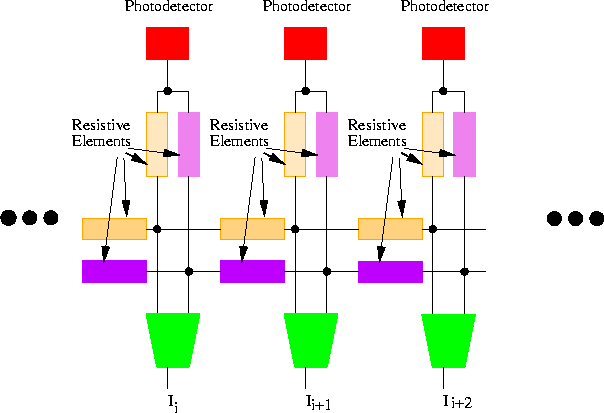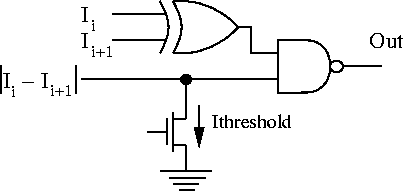
Figure 3.5: Block diagram of the Bair-Koch's LOG implementation using two resistive smoothing networks.
The motion detection chip designed by Bair and Koch [Bair and Koch 91b] is basically a zero-crossing edge detector. The chip consists of two layers of spatial smoothing resistive networks with different smoothing constants (see Figure 3.5). A comparator computes the difference of the outputs of these layers. The output of the comparator simulates an approximation to the Laplacian of Gaussian (LOG) function with a mexican-hat characteristics. The output of the comparator is then provided as current to the zero-crossing detector circuit shown in Figure 3.6. Motion detection is performed off-chip using a 80286 single board computer by tracking the position of zero-crossings.

Figure 3.5: Block diagram of the Bair-Koch's LOG implementation using two resistive
smoothing networks.

Figure 3.6: Schematic diagram of Bair-Koch's zero-crossing detector.